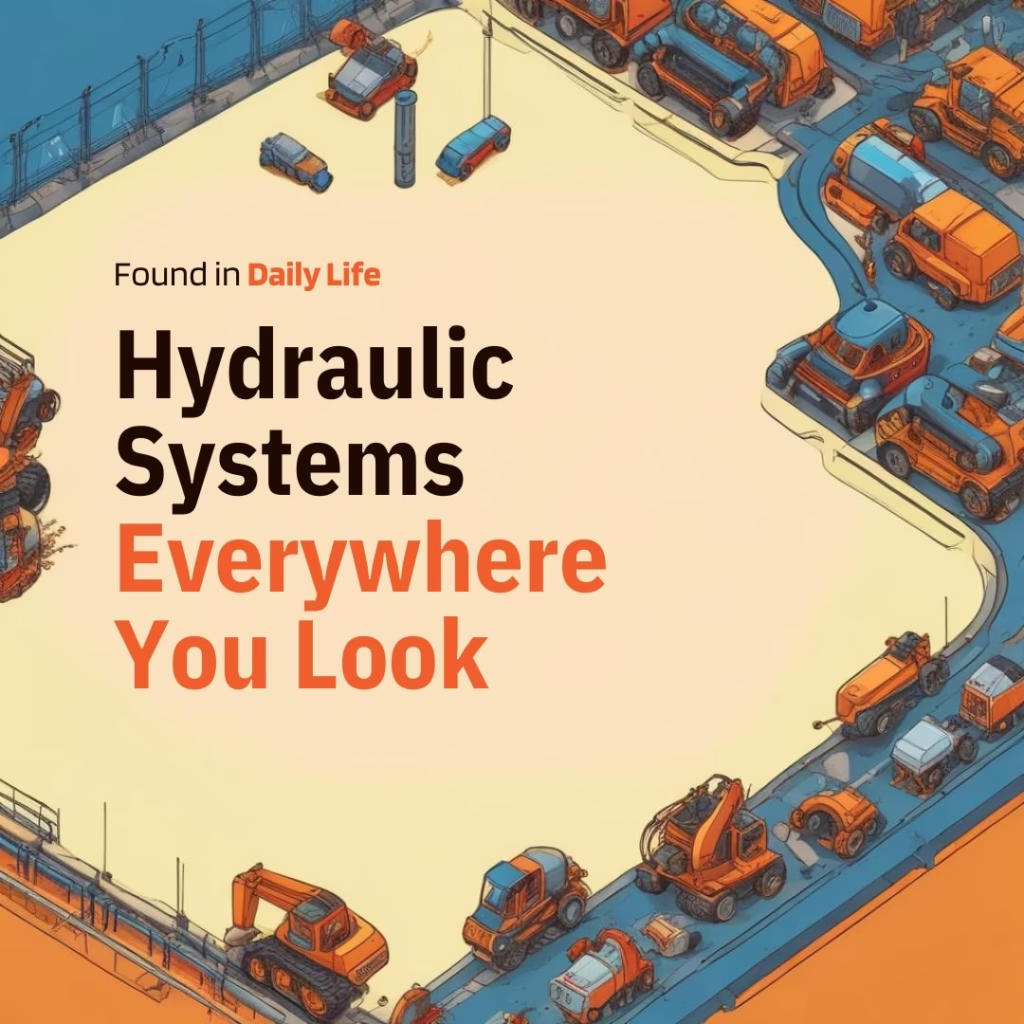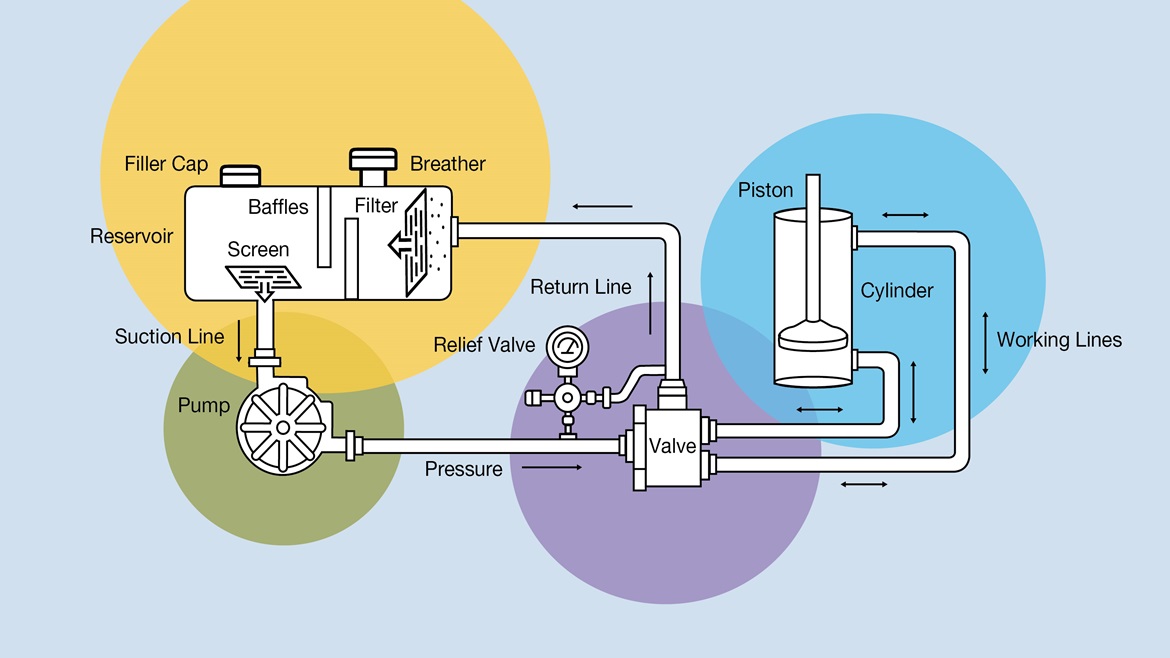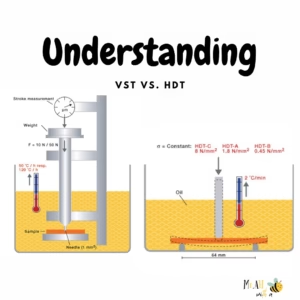Hydraulic systems are essential in powering machines and tools across many industries. A hydraulic system is a mechanical device that utilizes pressurized fluid to transfer power and control the operation of different components. But where can hydraulic systems be found? These systems are employed across various industries, including construction, manufacturing, agriculture, aerospace, and automotive. Moreover, this article explores their diverse applications and explains their importance in modern technology.
What is a Hydraulic system?
Hydraulic systems may serve different purposes, but they all operate on the same basic principle: using pressurized fluid to perform tasks. This pressurized fluid generates significant power, making hydraulics ideal for heavy equipment. Furthermore, in these systems, pressure applied to a contained fluid is transmitted uniformly, creating a force that enables operators to lift heavy loads and perform precise, repetitive tasks with ease.
Working principle
The working principle of a hydraulic system is based on Pascal’s Law, which states:
“In a confined fluid at rest, any pressure applied is transmitted equally and undiminished in all directions.”
Key Components
- Reservoir: Stores the hydraulic fluid and allows it to cool and settle.
- Hydraulic Pump: Converts mechanical energy into hydraulic energy by pressurizing the fluid.
- Control Valves: Regulate the flow, direction, and pressure of the hydraulic fluid.
- Actuators: Include:
- Hydraulic Cylinders: Produce linear motion or force.
- Hydraulic Motors: Generate rotary motion or torque.
- Pipes and Hoses: Transport the pressurized fluid throughout the system.
- Filters: Remove contaminants to ensure clean fluid.
- Pressure Relief Valve: Protects the system from overpressure by redirecting excess fluid.
- Fluid: Acts as the medium for power transfer and lubrication
This principle enables hydraulic systems to amplify force and perform heavy-duty tasks with minimal effort. Below is a step-by-step outline of the system’s operation:
Energy Conversion
- Input Mechanical Energy: A pump driven by a motor or engine converts mechanical energy into hydraulic energy by pressurizing a fluid (usually oil).
- Pressurized Fluid: The pump pushes the fluid into the system, creating potential energy in the form of fluid pressure.
Transmission of Pressure
- The pressurized fluid flows through pipes and hoses.
- The hydraulic fluid transmits force uniformly through the system to valves and actuators.
Control of Pressure and Flow
- Control Valves: Direct the fluid to specific actuators (e.g., cylinders or motors) to achieve the desired motion or force.
- Flow Regulators: Adjust the speed and pressure of the fluid to ensure precise control.
Force Multiplication
- In a hydraulic cylinder, the pressure acts on the piston. The force exerted is proportional to the area of the piston:F=P×Awhere:
- F: Force
- P: Pressure of the fluid
- A: Cross-sectional area of the piston.
- By using a larger piston, the system can amplify the input force significantly.
Work Output
- The actuators convert hydraulic energy into mechanical energy:
- Cylinders provide linear motion (e.g., lifting or pushing).
- Motors provide rotary motion (e.g., driving wheels or machinery).
Fluid Recycling
- The hydraulic fluid is returned to the reservoir after passing through the actuators, completing the circuit.
- The system continuously recycles and filters the fluid for reuse.
Industrial Applications
Manufacturing
Where can hydraulic systems be found in manufacturing? Hydraulic systems are present in nearly every manufacturing facility, powering equipment like robots, forging presses, packaging machinery, and conveyors.
Additionally, the energy is transferred through hydraulic hoses, tubes, and pipes connected by fittings or flanges. Actuators and valves regulate the power in the system by applying fluid pressure to operate the machinery.
Typically, a pump pushes hydraulic fluid through the system, creating pressure that operates a cylinder. The cylinder rod then converts this hydraulic energy into mechanical energy, enabling movement in components such as a robot arm or the ram of a forging press.
Examples in Manufacturing
- Forging presses utilize large pistons powered by high-pressure hydraulics to compress ingots or billets, creating parts with tight tolerances through closely regulated pressures and speeds.
- CNC machines employ hydraulics in tool holders for stable and repeatable machining operations. Die casting machines use high-pressure hydraulics to clamp molds for injecting molten metal to produce parts.
- Material handling equipment, such as hydraulic conveyors, overhead cranes, and forklifts, relies on hydraulics to move and lift materials in warehouses. Hydraulic servo presses in metal stamping apply consistent tonnage throughout the stamping stroke.
- Press brakes, or hydraulic bending machines, use synchronized hydraulic cylinders to bend parts with precision. Punch presses operate by pushing a punch through a die using hydraulic power to create preprogrammed holes.
- Robotic arms leverage hydraulics to drive actuators, enhancing power transmission and facilitating the operation of electric motors and solenoids for precise movements.
Construction
Where can hydraulic systems be found in construction? A hydraulic system in construction uses pressurized fluid to power and control heavy machinery for tasks like lifting, digging, and moving materials. It primarily relies on hydraulic cylinders driven by a pump and regulated by valves. This technology enables the powerful and precise operation of modern construction equipment such as excavators, cranes, bulldozers, and backhoes.
Examples in Construction
- Excavator: Hydraulic cylinders manage the movement of the boom, bucket, and rotation for digging and material handling.
- Crane: Hydraulics drive the lifting and swinging motions to safely maneuver heavy loads.
- Backhoe: Hydraulic cylinders operate both the front loader and backhoe arm for digging and lifting tasks.
- Bulldozer: Hydraulics adjust the angle and depth of the blade for grading and land clearing.
- Dump Truck: Hydraulic cylinders tilt the dump bed for unloading materials.
Automotive Industry
Vehicle Braking Systems
Where can hydraulic systems be found in the automotive industry? A vehicle’s hydraulic braking system uses pressurized brake fluid to transfer force from the brake pedal to the wheels. When the pedal is pressed, the brake pads push against the discs or drums, slowing the vehicle. This system operates on Pascal’s law, which states that pressure in a fluid is transmitted equally in all directions, enabling efficient braking with minimal pedal effort.
How it works
When the brake pedal is pressed, a piston in the master cylinder compresses the brake fluid, generating pressure. This pressure travels through the brake lines to the wheel cylinders at each wheel. In addition, the pressure in the wheel cylinders pushes the pistons, forcing the brake pads against the brake discs or drums, creating friction that slows the wheel’s rotation.
Heavy-Duty Trucks
A hydraulic system in a heavy-duty truck uses fluid pressure to generate force for lifting heavy loads, operating dump beds, and powering auxiliary functions. Furthermore, it typically includes a reservoir, pump, control valves, and hydraulic cylinders that convert hydraulic pressure into mechanical force. This system is usually powered by the truck’s engine via a Power Take-Off (PTO) unit.
How it works
The hydraulic system of a heavy-duty truck begins with the engine’s Power Take-Off (PTO), which activates the hydraulic pump. This pump draws hydraulic fluid from the reservoir and pressurizes it. Control valves then direct the pressurized fluid to the appropriate hydraulic cylinder based on the operator’s input. Inside the cylinder, the hydraulic fluid pushes the piston, generating the necessary force to perform various actions, such as lifting or tilting. This efficient process enables the truck to handle heavy loads and operate auxiliary functions effectively.
Examples
- Dump Truck Beds: Raising and unloading the bed.
- Crane Trucks: Lifting and positioning heavy loads.
- Tow Trucks: Winching and towing vehicles.
- Concrete Mixers: Rotating the drum.
Aerospace
Aircraft Control Systems
Where can hydraulic systems be found in aerospace? In aircraft control systems, a hydraulic system is essential for powering critical flight control surfaces such as flaps, ailerons, rudder, and landing gear. It uses pressurized fluid to generate the force needed to move these components, allowing pilots to maneuver the aircraft smoothly and precisely, making it a vital part of aircraft operation.
Examples in Aircraft Control Systems
- Aileron Control: Hydraulic actuators adjust the ailerons on the wings to manage roll during flight.
- Elevator Control: Hydraulic actuators operate the elevator on the tail to control pitch.
- Rudder Control: Hydraulics power the rudder to manage the yaw.
- Flap Extension and Retraction: Hydraulic systems deploy and retract the flaps on the wings to modify lift during takeoff and landing.
- Spoiler Deployment: Hydraulic actuators raise and lower spoilers on the wings to regulate lift and drag.
- Landing Gear Extension and Retraction: Hydraulic cylinders are used to raise and lower the landing gear. This enables the wheels to be raised and lowered during flight by actuating the linkages and mechanisms involved, ensuring safe takeoffs and landings.
- Brake Actuation: Hydraulic pressure is applied to the wheel brakes to slow the aircraft during landing.
Marine Applications
Cargo Ships
On cargo ships, hydraulic systems operate cranes, winches, and stabilizers. Furthermore, these systems ensure smooth loading and unloading of goods, even in rough seas. Hydraulic systems are essential for cargo ships, powering and controlling various operations:
- Cargo Systems: They facilitate the efficient and swift handling of heavy materials during cargo operations.
- Steering and Propulsion: Hydraulic systems drive the steering mechanisms and propellers or thrusters that navigate the ship through water.
- Stabilizers: They manage stabilizers to maintain the ship’s stability in rough seas.
- Engine Room: Hydraulic systems regulate valve positions and pneumatic air pressure in the engine room.
- Heavy Machinery: They power equipment and tools, such as deck cranes.
- Doors: Hydraulic systems open and close doors.
Submarines
Submarines use hydraulic systems for ballast control and steering, allowing them to navigate underwater effectively. The hydraulic systems play a crucial role in submarines, providing power and control for various functions:
- Ballast and Trim Control: Hydraulic systems help manage ballast tanks, allowing for precise control of buoyancy and depth by adjusting the amount of water and air in the tanks.
- Steering and Diving Planes: Hydraulic actuators control the movement of the rudder and diving planes, enabling the submarine to maneuver effectively underwater.
- Hatch Operations: Hydraulic systems power the opening and closing of hatches, ensuring secure access and maintaining pressure integrity.
- Weapons Systems: Many submarines use hydraulics to operate torpedo tubes and other weapon systems, providing the necessary force for launching.
- Heavy Machinery: Hydraulic systems power various machinery, such as cranes and handling equipment, for loading and unloading supplies.
- Emergency Systems: In emergencies, operators can use hydraulic systems to activate safety mechanisms and backup systems, enhancing the submarine’s operational reliability.
Agriculture
Tractors and Farm Equipment
Where can hydraulic systems be found in agriculture? Tractors, plows, and seeders use hydraulics for tasks like lifting, tilling, and planting, improving productivity and efficiency. Moreover, the tractor’s hydraulic system is essential to its functionality, allowing it to execute a variety of agricultural tasks efficiently. Tractors utilize hydraulic systems for several key functions, including:
- Steering: The hydraulic system provides precise control over the steering mechanism, enabling easy maneuverability in tight spaces and uneven terrain.
- Lifting: Hydraulic systems power the lifting mechanisms for various attachments, such as plows, cultivators, and front-end loaders. This capability allows the tractor to raise and lower heavy equipment smoothly and with minimal manual effort.
- Operating Implements: Tractors use hydraulics to operate various implements, including seeders, balers, and mowers. The hydraulic power enables these attachments to perform specific functions, enhancing productivity in the field.
Irrigation Systems
Modern irrigation systems use hydraulic pumps to distribute water evenly across fields, enhancing crop yield. A “hydraulic system” in irrigation refers to the network of pipes, valves, and pumps that utilize fluid mechanics principles to efficiently distribute water across a field. In addition, this system ensures a controlled and consistent water flow to crops by regulating pressure and managing distribution across various zones, minimizing waste, and maximizing crop yield. Essentially, it is the mechanism that transports water from the source to the plants through a controlled pressure system.
- Water Efficiency: Accurate water delivery reduces waste and conserves resources.
- Crop Optimization: Effective water distribution promotes healthier crops and increases yield.
- Cost-Effectiveness: Efficient irrigation systems lower water consumption and operational expenses.
Robotics and Automation
Industrial Robots
A hydraulic system in an industrial robot employs pressurized hydraulic fluid to power the robot’s actuators, allowing it to lift, move, and manipulate heavy loads with precision. This system typically powers applications that require substantial force and power, such as large robotic arms in manufacturing environments. It includes a pump that generates pressure and directs it through valves to cylinders or motors that produce the desired motion.
- High Power-to-Weight Ratio: Hydraulic systems can produce substantial force relative to their size, making them ideal for heavy lifting tasks.
- Smooth Motion: The incompressible nature of hydraulic fluid ensures smooth and controlled movement with minimal vibration.
Automated Systems in Warehousing
Automated warehouse systems utilize hydraulic systems to generate substantial force, primarily for efficiently lifting and moving heavy loads. They are especially effective for vertical movements, such as placing goods on high storage racks or transferring large items between conveyors, thanks to the high lifting capacity and precise control provided by hydraulics.
- Heavy Lifting Capability: Hydraulic systems excel at handling large, heavy items in a warehouse, where other lifting mechanisms may be impractical.
- Vertical Movement: They are especially effective for tasks that involve lifting goods to high storage shelves or lowering them to loading docks.
- Precision Control: Modern hydraulic systems offer accurate positioning and controlled movement for heavy loads.
Examples in Automated Systems
- Forklifts: Hydraulic cylinders drive the lifting and tilting functions of forklifts, enabling efficient movement of pallets.
- Automated Storage and Retrieval Systems (AS/RS): Hydraulic cylinders lift and lower storage trays within the AS/RS framework.
- Conveyor Systems: You can incorporate hydraulic lifts into conveyor lines to accommodate height differences between various levels.
Conclusion
In conclusion, hydraulic systems are fundamental to the operation of machines and tools across a wide range of industries. Furthermore, they utilize pressurized fluid to transfer power and control various components, playing a vital role in sectors like construction, manufacturing, agriculture, aerospace, and automotive. So, where can hydraulic systems be found? They are essential in applications such as lifting heavy loads, moving materials, and operating machinery. By providing significant force and precise control, hydraulic systems enhance efficiency and safety, making them indispensable in modern technology across diverse fields.
FAQs
- What are hydraulic systems?
They use fluid pressure to create movement and power machines. - Where can hydraulic systems be found in everyday life?
You can find them in cars, construction equipment, airplanes, and more. - How do hydraulic systems work?
They use fluid under pressure to transmit force and perform tasks. - Why are hydraulic systems used in construction?
They provide the power needed to lift, dig, and move heavy materials. - Where can hydraulic systems be found in agriculture?
Tractors, plows, and irrigation systems rely on hydraulics. - Are hydraulic systems used in airplanes?
Yes, they are essential for flight control and landing gear operations. - What makes hydraulic systems efficient?
They transmit power smoothly, handle heavy loads, and offer precise control. - Where can hydraulic systems be found in manufacturing?
In hydraulic presses and assembly line equipment. - What are the advantages of hydraulic brakes in vehicles?
They are more responsive and efficient than mechanical systems. -
Can hydraulic systems be used in robotics?
Yes, they power robotic arms and automated systems in warehousing.
If you like this post, you may also like
Thank you for reading, for more interesting articles, visit our homepage.








